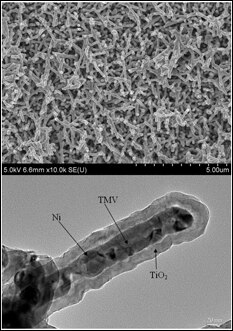Viruses tend to be given a bad rap when it comes to things like the common cold or herpes (cold sores people). Even plant viruses are destructive in nature, such as the tobacco mosaic virus, which is a single stranded RNA that infects hundreds of species such as tobacco and tomato plants (creating tomacco plants?). However scientists have found a way to take TMV’s rod-shaped structure and build a new generation of small, powerful and highly efficient batteries and fuel cells. Professor Reza Ghodssi and his team of researchers from the University of Maryland's A. James Clark School of Engineering and College of Agriculture and Natural Resources found that if you take TMV’s nanorod structure and bind them to the electrodes in a lithium cell using a thin film that acts as a ‘current collector’ they can actually diminish the size of the battery and make the battery last 10 times longer than conventional lithium-ion batteries.
Professor Ghodssi goes on to describe the future of this new virus/technology hybrid, “"The resulting batteries are a leap forward in many ways and will be ideal for use not only in small electronic devices but in novel applications that have been limited so far by the size of the required battery, the technology that we have developed can be used to produce energy storage devices for integrated microsystems such as wireless sensors networks. These systems have to be really small in size--millimeter or sub-millimeter--so that they can be deployed in large numbers in remote environments for applications like homeland security, agriculture, environmental monitoring and more; to power these devices, equally small batteries are required, without compromising in performance." More in-depth information on this research can be found at the University of Maryland’s web page here: http://www.eng.umd.edu/news/news_story.php?id=5374
Dig

